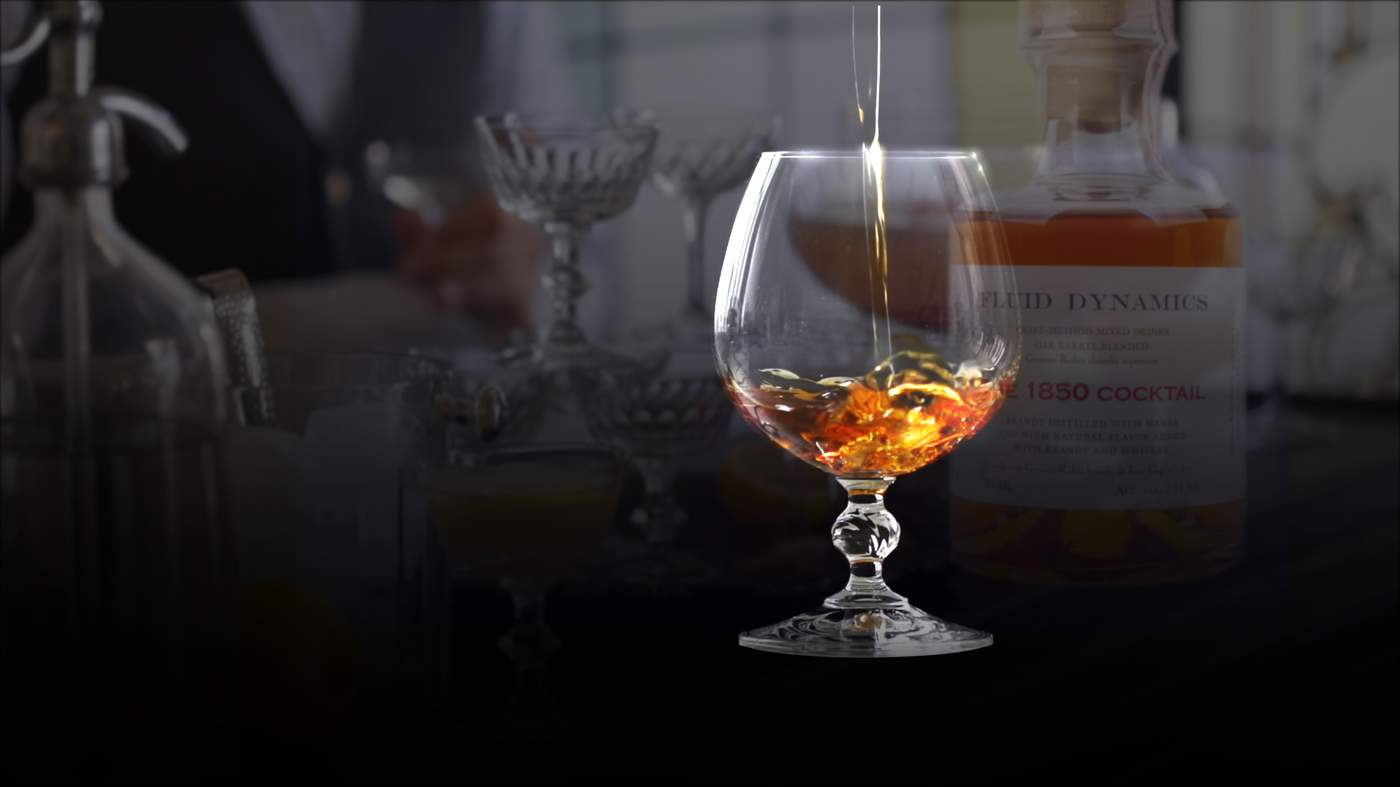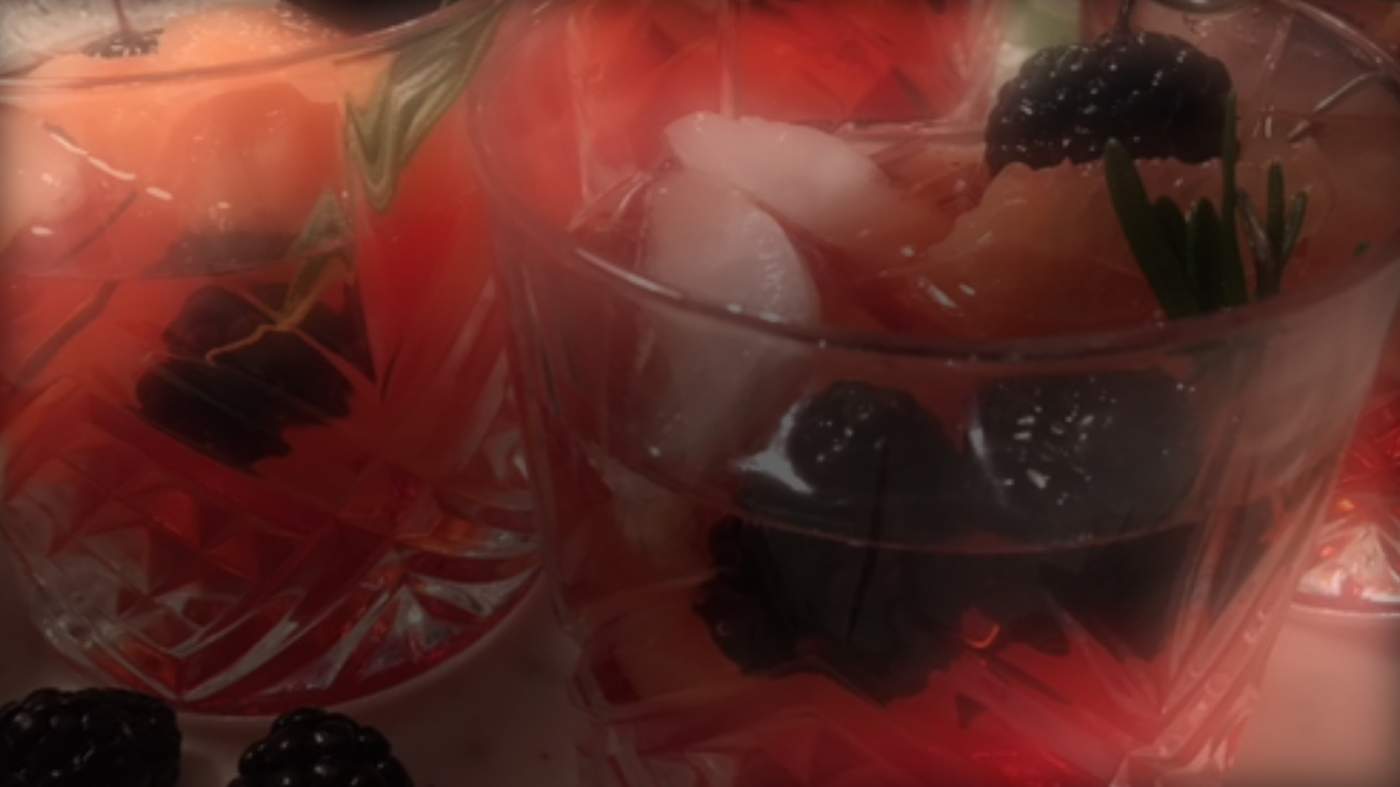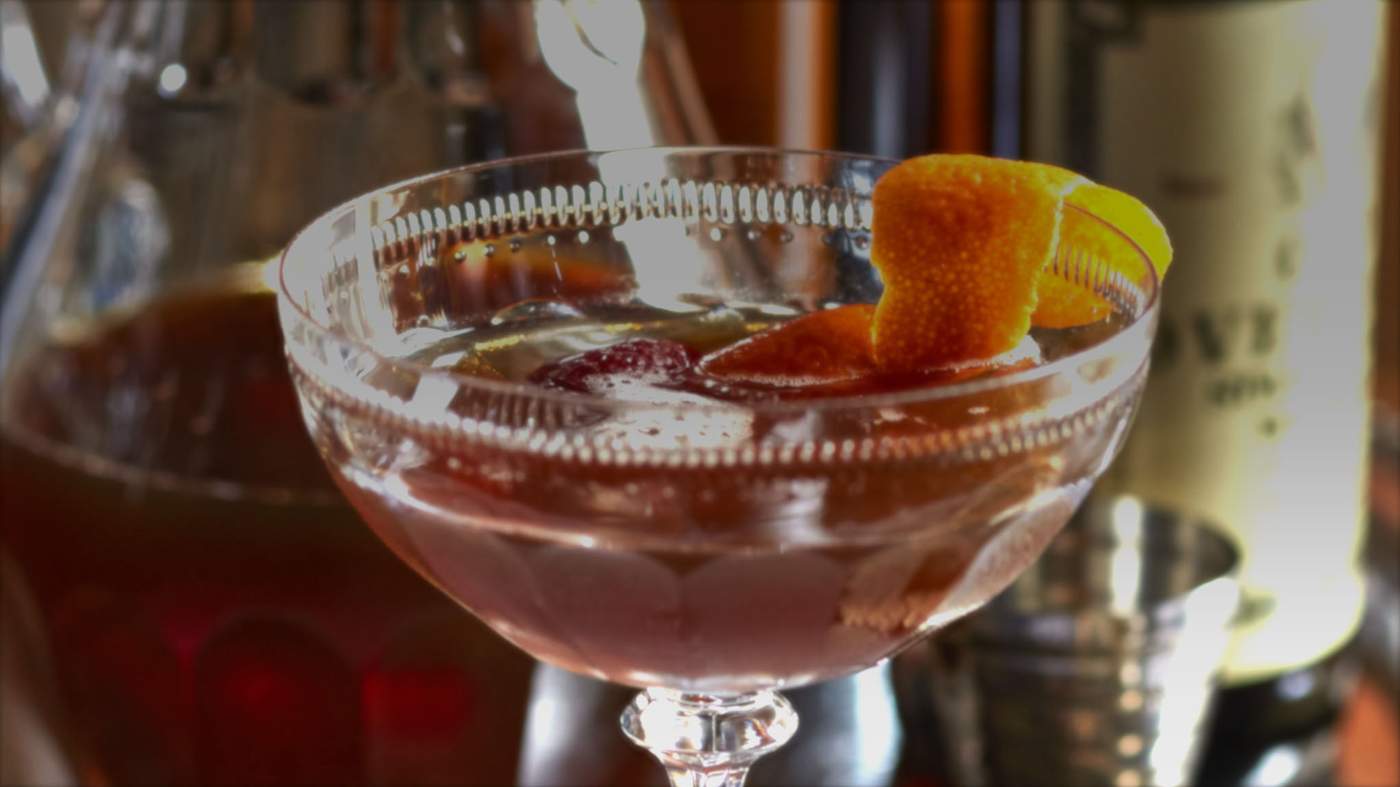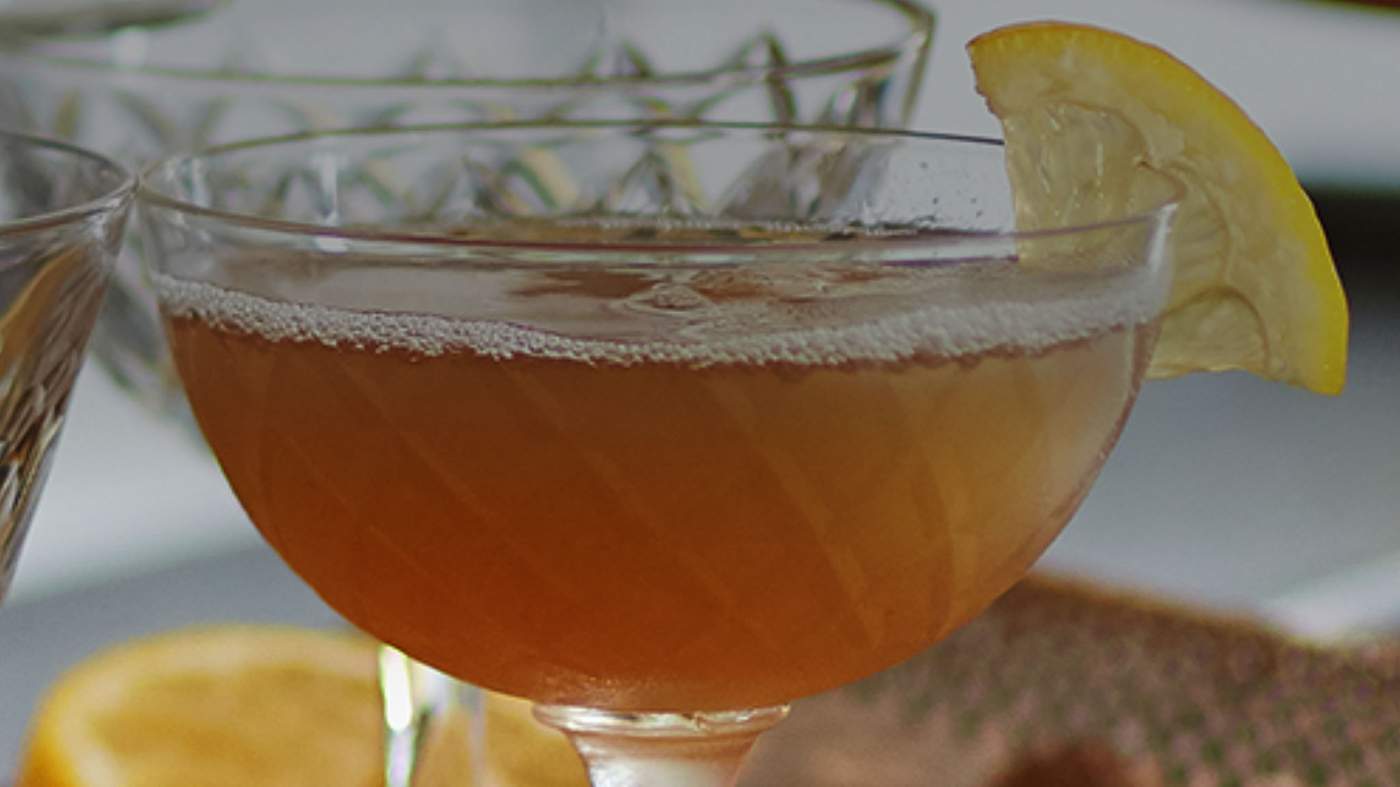When the London bartender and mixologist Tony Conigliaro bottled his first Manhattan a decade ago, he had no inkling his idea would be so prescient.

Prebatching has now become the hottest technique on the cocktail scene. Conigliaro’s original inspiration was a bottle of 1920s vermouth. Marveling at its mellow and harmonious complexity, he wondered if cocktails aged in bottle would develop the same characteristics. Opening his first experiments a year later, he discovered they did, and the idea soon caught on.
London remains the epicenter for batching: Ryan Chetiyawardana (who worked for Conigliaro at his 69 Colebrooke Row establishment) has made waves with White Lyan, a bar where all the drinks are pre-bottled and served straight from the fridge, “finished” in front of the customer with only minimal embellishment. Bottled cocktails are also a staple at Dandelyan at Mondrian London, Chetiyawardana’s latest bar. The CraftCocktail Co. in fashionable Bethnal Green and the whimsically named WorshipStreet Whistling Shop in hipster-hub Shoreditch are batching hot spots, too.
But the trend also has become firmly entrenched Stateside, ever since Jeffrey Morgenthaler (the Spirited Awards’2016 American Bartender of the Year) pioneered prebottled cocktails at Clyde Common in Portland, Ore. Morgenthaler’s inspiration? None other than one of Conigliaro’s bottle-aged Manhattans, which he encountered at 69 Colebrooke Row. Back home in Oregon, he added an old whiskey cask to the mix, and his barrel-aged Negroni soon became the stuff of legend. Now dozens of bars across the United States are experimenting with bottled cocktails.
Let us not forget that batching, in its most rudimentary form, has been around for quite some time.

After all, punch, the beverage of choice for 18th-century scoundrels, is nothing if not a batched cocktail. Mixed by numbers in a large bowl, punches require no shaking or stirring. Guests can even serve themselves—perfect for the crush of a well-attended soiree. Even bartenders appreciate the genre: Morgenthaler, for example, has a daily punch program at Clyde Common.
But if you’re willing to be a bit more ambitious, home batching can be taken further. The first step is to scale your recipe, which is simplified by applying some elementary math to reveal the ratio of ingredients. The next is to factor in dilution, if ice is critical to the character of the drink: prepare a test cocktail, weigh it, shake it over ice, and weigh it again. The difference is the amount of water contributed by the melting ice; and since 1 milliliter of water weighs 1 gram, figuring out how much water to add to your recipe is easy enough. For the math-averse, mix the batch ahead of time, but shake the drinks over ice before serving.
There are also a few fundamental don’ts. “Avoid eggs” is every bartender’s first piece of advice for the home batcher: They are liable to separate and demand a lot of shaking. Fruit juices and bubbly ingredients—whether sparkling wine, club soda, or tonic—must also be added at the last minute; they’ll lose their freshness and effervescence if there is any gap between mixing and service.
Within those parameters, give the imagination free rein. Simple syrups, for example, can be infused with teas and herbs to contribute depth and complexity.
Chetiyawardana recommends using the humble microwave for garnishes to provide a sharp burst of heat that liberates flavor—whether it be the citrus bitters of orange peel or the warm spice of cinnamon. Consider preparing garnishes in advance to speed up the finishing of your drinks.
Experiment with refrigerator and freezer times to find the optimum temperature for each recipe. Shaken over ice, most drinks will reach –5 degrees centigrade (23 degrees Fahrenheit), but that’s just a starting point when batching.
And the best part? By the time your guests arrive, you can join in and enjoy the fruits of your labor, assured of your status as the ultimate cocktail craftsman.
Bringing the Bartender Home

With a new generation of bottled cocktails, precisely crafted & barrel‑aged drinks are just a twist away.
By Michalene Busico
The boom in batched cocktails has had a side benefit for the home bartender: Leading mixologists and distillers have begun bottling their customized drinks, taking advantage of professional techniques such as barrel aging or slowly infusing spirits with fruit, spice, or even candle wax. These bottled cocktails have nothing in common with those artificial-tasting drinks sold on supermarket shelves; they are made with premium spirits and natural ingredients with the care one would expect from those whose reputations are on the line. When served at the right temperature in a properly chilled glass, it is hard to believe they were poured directly from a bottle.

Fluid Dynamics Dry Martini, 1850 Cocktail, Rye Manhattan, & St. Nick
Craft Distillers in California, best known for its Germain-Robin brandies, makes this line of aged cocktails based on its fine spirits. The 80-proof Dry Martini—a perfect balance of Russell Henry London dry gin and Vya extra-dry vermouth, aged in stainless steel for six weeks—is crisp and redolent of juniper and pine, with an earthy brine on the palate. The barrel-aged cocktails, from about 65 to 78 proof, include the festive St. Nick, a ruby blend of Germain-Robin brandy and Clear Creek cranberry liqueur; the 1850 Cocktail, a Sazerac variation made with Germain-Robin brandy, Low Gap whiskey, and Germain-Robin absinthe; and a Rye Manhattan with Low Gap rye. In each case, the quality of the spirit is enhanced by careful cocktail making.
$64 per liter
craftdistillers.com

High West Barreled Boulevardier & the 36th Vote Barreled Manhattan
The distinct flavors of bourbon and rye shine through in these barrel-aged drinks from the Utah distiller High West. The 72-proof Boulevardier (bourbon, Vya sweet vermouth, and Gran Classico amaro) mellows for 120 days in oak, while the 36th Vote, a classic 74-proof Manhattan whose name commemorates Utah’s deciding vote to end Prohibition, languishes for 90 days. Both make a strong case for the benefits of the barrel.
$55 each
highwest.com

Mr Lyan’s Spotless Martini, Candlelit Manhattan, and Rainy Day Spritz
Ryan Chetiyawardana, owner of the innovative London bars White Lyan and Dandelyan, continues to push the envelope with his bottled drinks. The 61-proof Spotless Martini is like sipping a garden of citrus, flowers, and juniper berries and is made with his London dry gin, vermouth, and essences of olives and lemons—no need to garnish, no chance of altering his perfectly calculated ratios. The 55-proof Manhattan, a blend of his bourbon, vermouth, and bitters, gets an alluring softness from wax—the bottle is lined with it. And his Spritz, a 33-proof mix of raspberry eau-de-vie, vermouth, and bitter rhubarb liqueur, is a light libation poured over ice, or the basis for a spritz with a splash of Prosecco or white wine. All are available online at Master of Malt (masterofmalt.com). $31 to $51 each
mrlyan.com

Watershed Old-Fashioned
This Ohio microdistiller makes a savory, 70-proof cocktail with its small-batch bourbon, raw sugar, cherry juice, and bitters. The drink spotlights the high quality of the spirit and has a spicy, woodsy character, rather than the fruity sweetness we expected from a bourbon drink enhanced with cherry. Until recently, the old-fashioned was available only in Ohio, but it is now sold online by Binny’s Beverage Depot in Chicago binnys.com. $45 each
watersheddistillery.com

Hochstadter’s Slow & Low Limited Release Rock & Rye
A recent release from Cooper Spirits Co.—which put the liqueurs St-Germain and Crème Yvette on mixology’s top shelf—is a revival of the Rock and Rye. This 100-proof bottling blends 8-year-old rye whiskey, air-dried navel oranges, raw honey, Angostura bitters, and rock candy. At that proof, it begs to be poured over ice for a little dilution. $35 each
drinkslowandlow.com

Bully Boy Old-Fashioned
Boston’s first craft distillery released its version of an old-fashioned last year. Made with Bully Boy’s American Straight Whiskey, sugar, and a hefty dose of bitters, the 71-proof drink is a festive version of the cocktail, with a pinkish tint and notes of peppermint and gingerbread. $30 each
bullyboydistillers.com

Courage and Stone Black Manhattan and Whiskey Old-Fashioned
Aisha Tyler, actress and cohost of The Talk television show, has collaborated with New York Distilling Co., maker of Dorothy Parker American gin, on a line of bottled drinks debuting this fall. Tyler has long batched cocktails at home and prefers drinks that are “familiar and classic, with a small special touch.” The first two releases are just that: The Black Manhattan combines rye, bitters, and a well-placed accent of morello cherry, while the old-fashioned tastes as if a twist of orange has just been snapped over the glass. $50 each
courageandstone.com

Om Organic Mixology
These 30-proof liqueurs, made in Michigan with a base of sugarcane vodka, can be sipped straight over ice or mixed with other spirits to make a stronger cocktail. The flavors, created by mixologist Natalie Bovis, seem inspired by the era of the Cosmopolitan and Chocolate Martini, and include cranberry and blood orange, Meyer lemon and ginger, and dark chocolate and sea salt. $25 each
omspirits.com

Plantation Pineapple Stiggins’ Fancy Rum
This infused dark rum—named best new product at this year’s Tales of the Cocktail and made in collaboration with the cocktail historian David Wondrich—is modeled on a 19th-century “sipping rum” and makes a fine drink served neat or on the rocks. Its syrupy, citrusy aroma gives way to juicy pineapple flavors mingled with rich, 80-proof Trinidadian rum. It avoids cloying sweetness with a hint of the fruit’s natural acidity and greenness—the result of infusing the pineapple rinds separately from the fruit. $35 each
plantationrum.com












